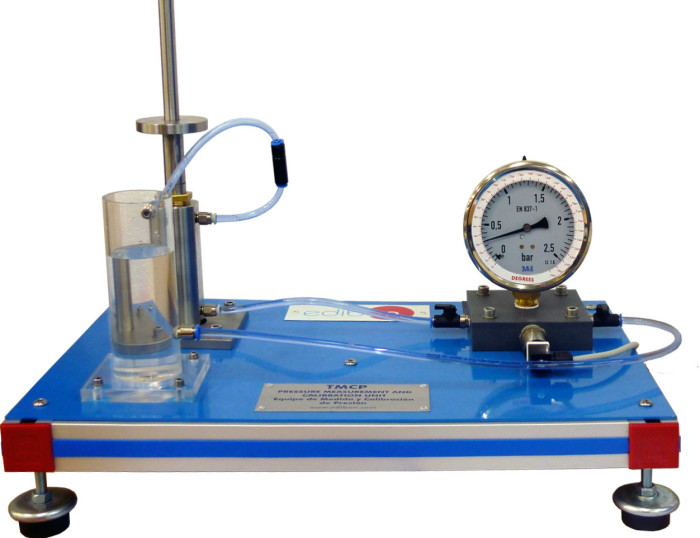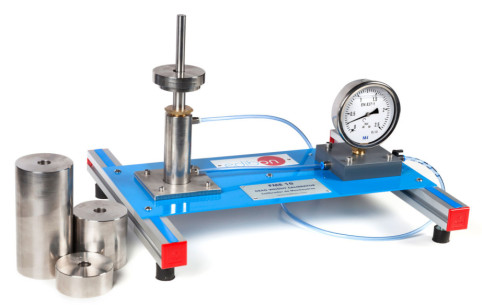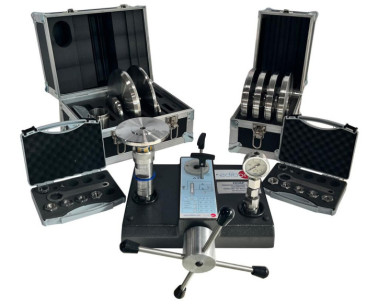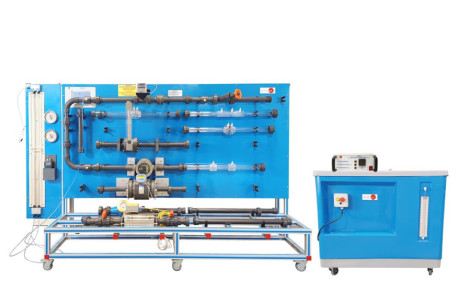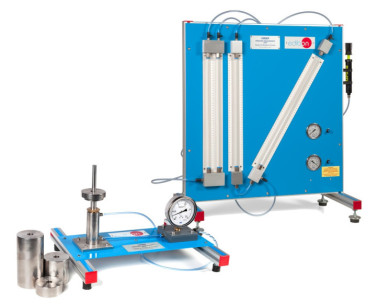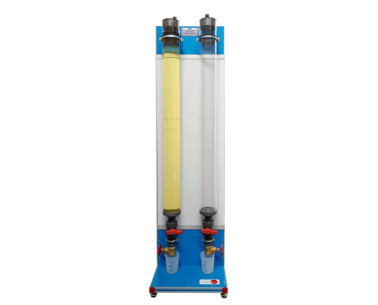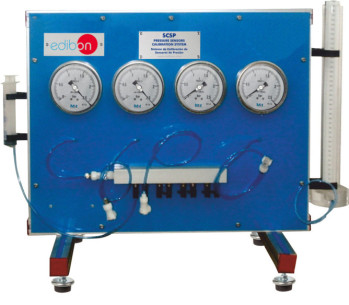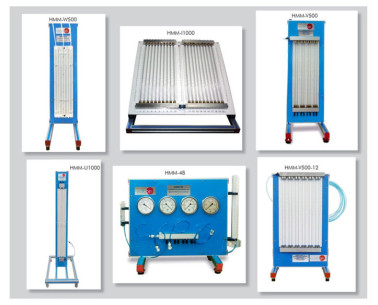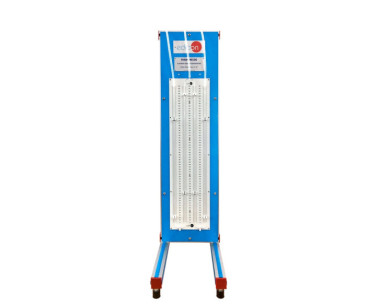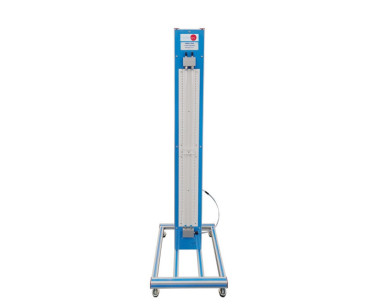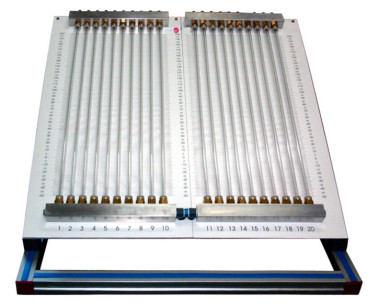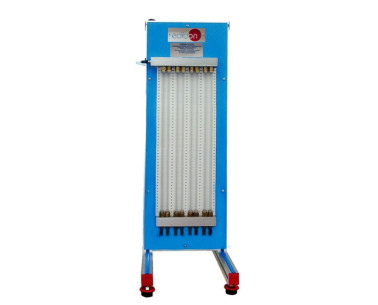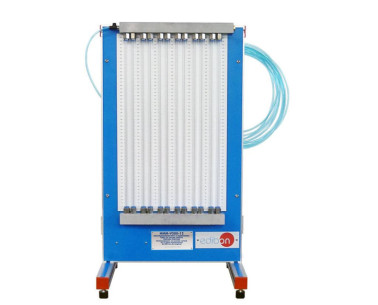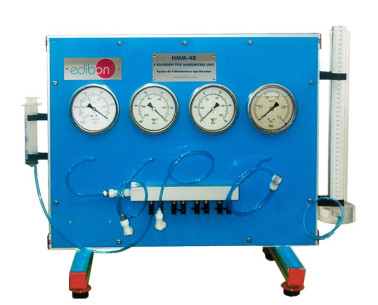TMCP Unité de Mesure et Étalonnage de Pression
SYSTEMES INNOVANTS
The Pressure Measurement and Calibration Unit, "TMCP", has been designed to study the concept of pressure and the different methods and techniques used to measure this variable.
Laboratories
NOUVELLES LIÉES
Description Générale
The Pressure Measurement and Calibration Unit, "TMCP", has been designed to study the concept of pressure and the different methods and techniques used to measure this variable.
The dead-weight calibrator consists of a cylinder in which interior a precision piston is fitted and slid. Different weights are added to generate inside the cylinder a certain amount of preset pressures.
The Bourdon manometer and the pressure sensor, which must be checked and calibrated, are connected to the cylinder through a flexible tube. Any possible leakage outside the piston is directed through the flexible tube towards a vessel, to which a check valve is fitted to prevent pressure drop in the manometer due to that leakage.
The Bourdon manometer includes a scale calibrated in degrees of rotation, apart from the usual pressure scale.
The pressure sensor generates an output voltage proportional to the applied pressure.
An electronic console with two digital displays that show the output of the pressure sensor (in Volts) and the conditioned reading in two engineering units. Besides the corresponding signals are sent to an I/O port for their acquisition via software in a computer (PC).
Software used to acquire data and to obtain the calibration curve (with slope and ordinate in the origin) both in function of the angular displacement of the needle and in function of the output voltage of the sensor.
Des exercices et pratiques guidées
EXERCICES GUIDÉS INCLUS DANS LE MANUEL
- Study of the concept of pressure (force/area).
- Study of the function of a dead-weight pressure calibrator.
- Study of the concepts of measurement and calibration (gauge and absolute pressures, zero error, non-linearity, scale error, conversion of arbitrary scale into engineering units).
- Study of pressure scales.
- Study of the operation and characteristic behaviour of a Bourdon type manometer.
- Checking the readings of a Bourdon type manometer using a standard set of calibrated weights.
- Calibration of a Bourdon type manometer in engineering 2 units (kN/m² ).
- Calibration of a Bourdon type manometer in arbitrary units (angular displacement of needle).
- Study of the operation and characteristic behaviour of a pressure sensor.
- Calibration of a pressure sensor (output voltage of the sensor).
- Calibration of a pressure sensor and signal conditioning circuit in engineering units.
- Study of the sources of error in measuring and calibration (signal conditioning, manufacturing tolerances, display resolution, friction and backlash…).
UNITÉS SIMILAIRES DISPONIBLES
Indicateur de Manomètres de Précision
EQUIPEMENT COMPLEMENTAIRE
Démonstration de Stations de Mesure
Unité de Mesure de Pression
Unité de Viscomètre à Chute de Bille et Détermination du Coefficient de Résistance
Indicateur de Manomètres de Précision
Système de Calibration de Capteurs de Pression
Manomètres et Muntimanomètres (plusieurs types) :
Double Manomètre à "U"
Manomètre à "U"
Multimanomètre incliné à 20 tubes manométriques de 250 mm de longueur
Multimanomètre, en position verticale, à 8 tubes manométriques de 500 mm de longueur
Multimanomètre, en position verticale, à 12 tubes manométriques de 500 mm de longueur
Unité de 4 Manomètres de type Bourdon
Qualité

Service après vente

 Préférences sur les cookies
Préférences sur les cookies

